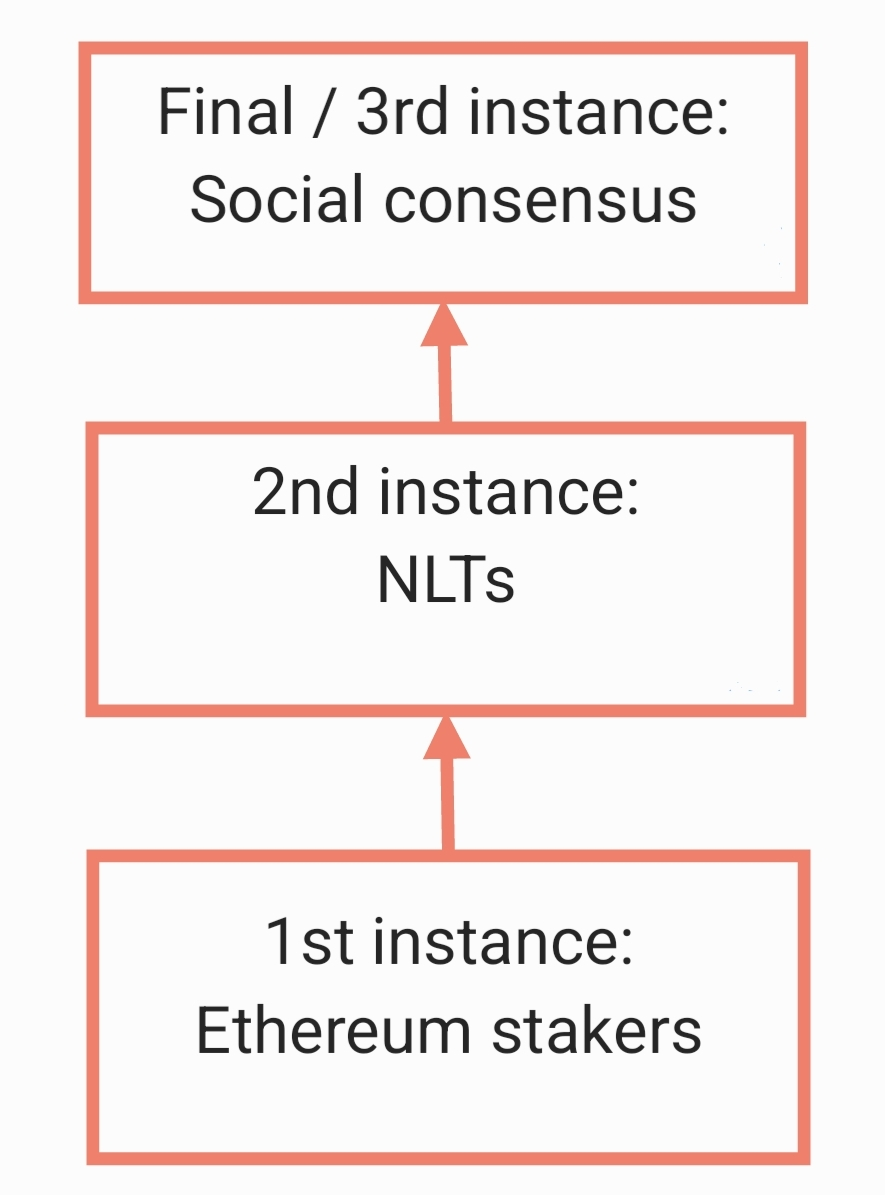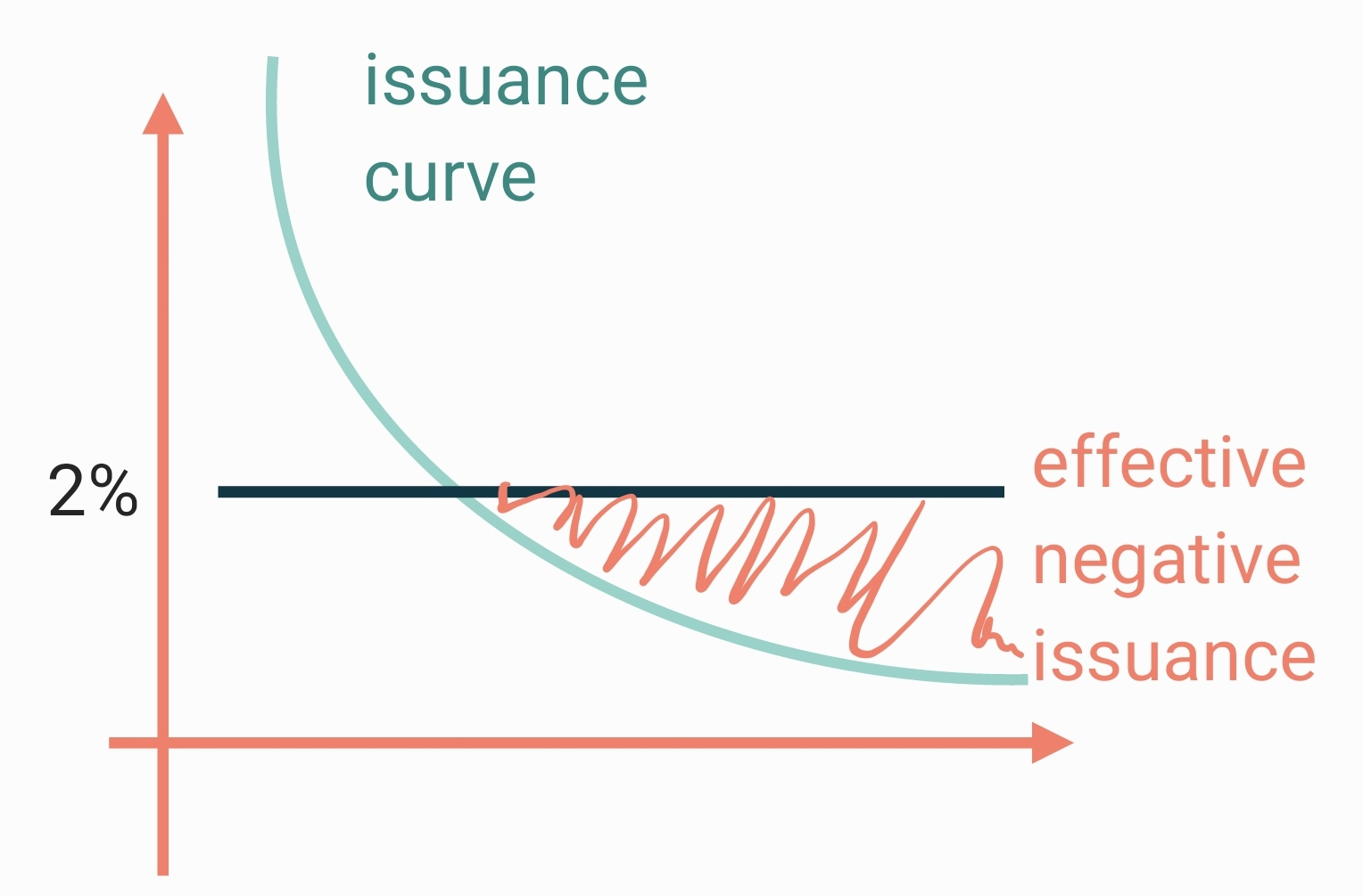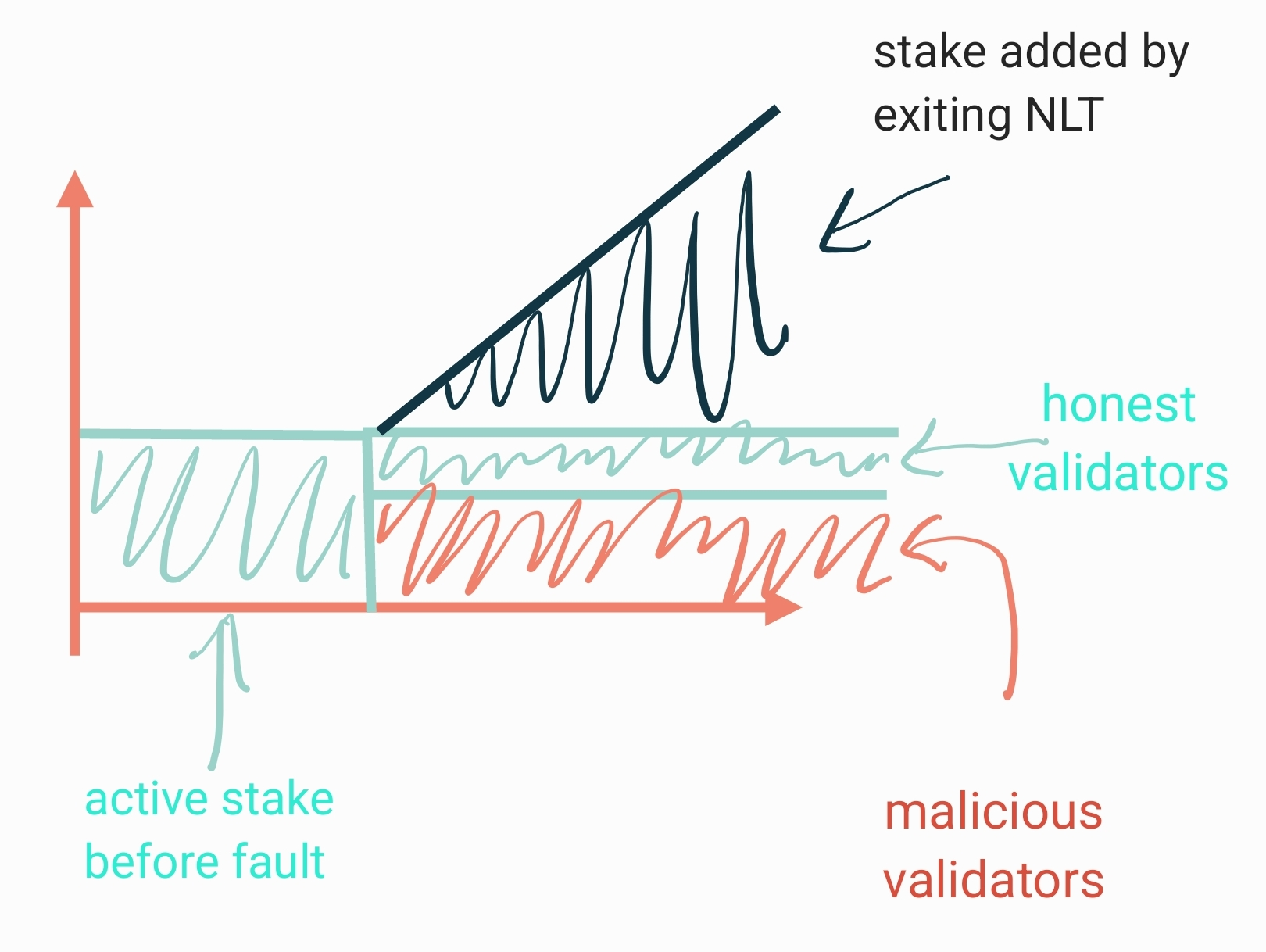owned this note
owned this note
Published
Linked with GitHub
# Native liquid staking
Ethereum social consensus is the ultimate conflict resolution mechanism for the Ethereum chain. It is currently very rarely invoked; as a first line, Ethereum core developers provide client upgrades that implement a fork every 0.5-2 years, and most node operators install these by default; this is a form of delegated social consensus. Very rarely, contentious forks happen, where the Ethereum community itself makes a rapid decision on which chain to follow. This has only happened once in Ethereum's history (2016, the DAO fork), and is probably going to stay an extremely rare last-measure resort.
Most in the Ethereum community believe fundamentally that Ethereum should have certain properties. One of these is providing almost absolute stability on the Ethereum application layer, where an intervention is only warranted if an application is extremely unethical (e.g. an assassination market) or threatening to the stability of Ethereum itself (e.g. the DAO hack where a hacker would have amassed such a large amount of Ether that it would have threatened the future of Ethereum). A second property that Ethereum should have is that of censorship resistance. A relative guarantee of this is provided by having a diverse validator set, so that in practice, no entity or law can reach far enough to effectively stop transactions from coming on chain. If this fails, the Ethereum community is expected to intervene with a fork that removes the censoring validators (and punishes them at the same time).
In this sense, we can currently see the "court system of Ethereum" as having two instances -- the validator set, and the community. But what if we had another instance in between the two, that can resolve conflicts before they go to the highest court, thus reducing the likelihood of ever needing to use the last resort?

# NLT = Native Liquid staking Token
Let's create a native liquid staking token (NLT). The token by default represents staking with "all Ethereum validators", and returns 2.5%. This creates an effective price floor for Ethereum staking, since almost anyone can safely use this token nearly risk-free and so the validator issuance curve can remain the same without (non-NLT) staking taking over the majority of ETH supply.

The NLT comes with one important caveat: All collective penalties apply to it (proportional slashing and inactivity leaks) as if it were one of the offending validators, with a 7 day delay. This means that in the case of a mass slashing event affecting all third of all active validators, the NLT holders lose all their capital.
However, there is an exit mechanism, where NLT holders can exit their NLTs, and escape the penalty if a mass fault is currently happening. When exiting, NLTs have to specify a subset of validators that they believe is honest; let's call this HVS [Question -- how do we make this efficient?]. They then go through the exit queue as if they were a validator that votes like the HVS, and if the HVS misbehaves, they get punished and potentially lose all/part of their stake. The incentive is thus to actually choose a validator set that they believe to be honest. At the same time, the HVSs votes are boosted in attestations by the share that is delegated to them from NLT holders.
When something bad happen on Ethereum, for example a censorship attack, we hope NLT holders will choose the honest validators, and in the best case boost them enough that their chain becomes the one favoured by the fork choice. [Question -- how can we get NLT exit messages included on a malicious chain? Can we design exit messages so that they adjust the weight even if not on chain?]

In the unhappy case, NLT holders delegate to a malicious validator set, and Ethereum social consensus has to come in as the last resort to fix the chain and "punish" both malicious validators and NLT holders.
Assuming Ethereum social consensus makes the correct choice, the incentive of the NLT holders is to try and resolve the conflict correctly.

